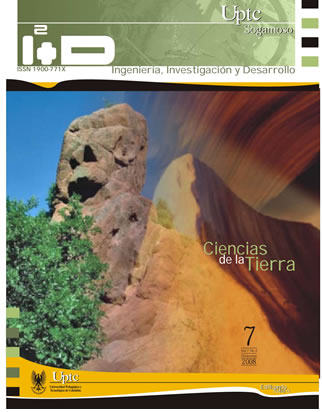Implementation of a LQG controller for a structural model´s seismic protection with oe degree of slackness

Abstract
It presents the modeling and the identification of a one grade looseness structure, and also an active LQG comptroller's design, which is intended to reduce the structural vibrations of a floor, facing some seismic vibrations in its base. The controller uses as the source the first level strucutre´s acceleration and its design is based upon the model and the structural system's identification, the one which was carried out. The model was verified by a simulation and experimentation, by exciting the structure at its base with the seismic waves provided by el centro and Armenia, and observing the realtive structure's acceleration decreases, which were up to 63.68% and the relative displacements lower than 1% in height.Keywords
active mass damper, active comptroller, structural comptroller, LQG, modeling lineal motor
References
- Battaini, M., Yang, G., & Spencer, B. F. (2000): Bench-scale experiment for structural control. Journal of Engineering Mechanics, vol.126 (2), 140-148.
- Center, E. E. R. (2008): Applications of Passive Protective Systems Around the World. Retrieved 19/10/2008, from http://nisee. berkeley. edu/prosys/applications. html.
- Chopra, A. K. (2000): Dynamics of structures: theory and applications to earthquake engineering, Prentice Hall, 2007.
- Datta, T. K. (2003): A state-of-the-art review on active control of structures. ISET Journal of earthquake technology, vol. 40(1), 1-17.
- Dyke, S. J. (1996): Acceleration feedback control strategies for active and semi-active control systems: modeling, algorithm development, and experimental verification (Doctoral dissertation, directed by B. F. Spence, Jr. for the Department of Civil Engineering and Geological Sciences.University of Notre Dame).
- Dyke, S. J., Spencer, B. F., Quast, P., Kaspari, D. C., & Sain, M. K. (1996): Implementation of an active mass driver using acceleration feedback control. Computer‐Aided Civil and Infrastructure Engineering, vol. 11(5), 305-323.
- Dyke, S. J., Spencer Jr, B. F., Quast, P., Sain, M. K., Kaspari Jr, D. C., & Soong, T. T. (1994): Experimental verification of acceleration feedback control strategies for an active tendon system. Nat. Center for Earthquake Engrg. Res., Tech. Report NCEER-94, 24.
- Gómez, D., MARULANDA, J., & THOMSON, P. (2008): Sistemas de control para la protección de estructuras civiles sometidas a cargas dinámicas. Dyna, vol. 75(155), 77-89.
- Guclu, R. (2006): Sliding mode and PID control of a structural system against earthquake. Mathematical and Computer Modelling, vol. 44(1), 210-217.
- NEHRP. (2003): Recommended provisions for seismic regulations for new buildings and other structures. Paper presented at the Building seismic safety council.
- NSR-98. (1998): Ley 400 de 1997, Normas Colombianas de Diseño y Construcción Sismo Resistente.
- Song, G., Ma, N., & Li, H. N. (2006): Applications of shape memory alloys in civil structures. Engineering structures, vol. 28(9), 1266-1274.
- Soong, T. T., & Spencer, B. F. (2002): Supplemental energy dissipation: state-of-the-art and state-of-the-practice. Engineering structures, vol. 24(3), 243-259.
- Symans, M. D., & Constantinou, M. C. (1999): Semi-active control systems for seismic protection of structures: a state-of-the-art review, Engineering structures, vol. 21(6), 469-487.
Downloads
Download data is not yet available.